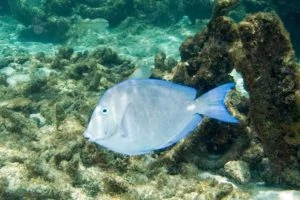Acanthurus japonicus – Powder Brown Tang
Acanthurus japonicus or Powder Brown Tang is excellent to keep in the company of other species. They should be kept solitary as they are aggressive towards conspecifics. It can only be kept in a group in very large aquariums. A territory is being established. It is a species that is difficult to keep alive in the aquarium.
They are very similar to Acanthurus glaucopareius and have long been considered one species.
When purchasing the Philippijnen Doctor fish you have to pay attention. Some specimens don’t want to eat because of the stress of catching, travelling and housing in a store. Feed them in the store with a piece of mussel to see if they accept the food. If they don’t accept the food, leave the fish in the store.
Synonyms: Hepatus aliala japonicus, Acanthurus japonica, Acanthurus japonicas.
Diet
Live or frozen food should be given alternately as food, but regular vegetable food should definitely not be missing from the menu. hey actually eat all kinds of algae in the aquarium.
Breeding Acanthurus japonicus – Powder Brown Tang
Not much is known about breeding in the aquarium.
Warning
This species has a razor-sharp blade at the base of its caudal fin. These retractable scalpel-like prongs are a natural way to defend themselves. They only unfold when the fish is excited or feels threatened. However, they can cause very deep flesh wounds, often leading to infections. The infections are characterized by swelling and discoloration of the wound. This can last for several hours. Due to the infections caused by scalpel wounds, it is suspected that they have venom glands.
Video
Author
Jan Bukkems – Aquavisie
Copyright images











Reviews
There are no reviews yet.